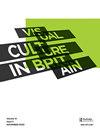Introduction: From Silent to Sound: Cinema in Scotland in the 1930s
Q2 Arts and Humanities
引用次数: 0
Abstract
Like any other moment of industrial and institutional transformation, the transition from silent to sound cinema was less linear and inevitable than hindsight would suggest. There was nothing obvious about the emergence of the feature-length fiction film with its unbroken soundtrack of dialogue and music. This special issue uses a tight focus on a few hectic years, and on a peripheral region within a hegemonic power: Scotland, a film-hungry nation with an oversized filmic image. Scotland shared a language with, and exerted a strong diasporic influence on, Hollywood as a film metropolis and London as a seat of the global cinema trade. At the same time, its internal market was too small to sustain production beyond local actualities, so most of the fictional representations of Scottishness that appeared on Scotland’s screens were crafted elsewhere. In relation to the centres of production, Scotland was a marginal nation, but fantasy Scotlands proliferated in films produced in those dominant centres. The transition to sound, as a moment of consolidation but also of instability, presents an ideal opportunity to observe these contradictory forces of proximity and marginality at play. This special issue has a connection with two research projects funded by the Arts and Humanities Research Council – in not only its subject matter, but also its academic contributors. The Early Cinema in Scotland project, which involved Marı́a Vélez-Serna, one of this issue’s guest editors, as Research Assistant, ended in 2015 and produced an edited collection, as well as a number of other outputs, which sought to trace developments in production, exhibition, and distribution up to 1927. ‘British Silent Cinema and the Transition to Sound’, a project that ended in 2017, examined the arrival of sound cinema in Britain between the years of 1927 and 1933, focusing on a broad range of topics such as economics, employment, technology and infrastructure, as well as the shift in film form and style, including its impact on production, distribution, exhibition, reception and critique. Sarah Neely, the second guest editor of this issue, served as one of the project’s Co-Investigators, alongside John Izod, another contributor to this issue, in leading the project’s research, focusing on the period of transition in Scotland. The project will eventually include two book-length studies by two members of the project team, Geoff Brown and Laraine Porter, the project’s Principal Investigator, as well as a number of other publications, including two further special issues of academic journals: one already published in 2018 for Music, Sound and the Moving Image, and another forthcoming with the导言:从无声到有声:20世纪30年代苏格兰的电影
就像任何其他工业和制度转型的时刻一样,从无声电影到有声电影的转变并不像事后所认为的那样线性和不可避免。这部长篇小说电影的出现并没有什么明显的迹象,它的对白和音乐都是完整的配乐。本期特刊将焦点集中在这几年忙乱的日子里,以及一个霸权国家的外围地区:苏格兰,一个渴望电影的国家,有着超大的电影形象。苏格兰与好莱坞(好莱坞是电影之都)和伦敦(伦敦是全球电影贸易的中心)共享一种语言,并对其产生了强烈的影响。与此同时,它的内部市场太小,无法维持超出当地实际情况的生产,因此,出现在苏格兰银幕上的大多数虚构的苏格兰特征都是在其他地方制作的。与生产中心相比,苏格兰是一个边缘国家,但这些主导中心制作的电影中,奇幻苏格兰的数量激增。向声音的过渡,作为一个巩固的时刻,也是一个不稳定的时刻,提供了一个理想的机会来观察这些相互矛盾的接近性和边缘性的力量在发挥作用。这期特刊与艺术与人文研究委员会资助的两个研究项目有关,不仅在主题方面,而且在学术贡献者方面。《苏格兰早期电影》项目于2015年结束,由本期客座编辑之一marir - a vsamez - serna作为研究助理参与,并制作了一个编辑集,以及一些其他产出,旨在追溯1927年之前的制作、展览和发行的发展。“英国无声电影和向有声电影的过渡”是一个于2017年结束的项目,该项目研究了1927年至1933年间英国有声电影的到来,重点关注经济、就业、技术和基础设施等广泛主题,以及电影形式和风格的转变,包括其对制作、发行、展览、接受和评论的影响。Sarah Neely是本期的第二位客座编辑,她是该项目的共同调查员之一,与本期的另一位撰稿人John Izod一起领导该项目的研究,重点关注苏格兰的转型期。该项目最终将包括由项目团队的两名成员Geoff Brown和Laraine Porter(项目首席研究员)进行的两本书长度的研究,以及其他一些出版物,包括两本学术期刊的特刊:一本已于2018年出版的《音乐,声音和运动图像》,另一本即将出版
本文章由计算机程序翻译,如有差异,请以英文原文为准。
求助全文
约1分钟内获得全文
求助全文
来源期刊

Visual Culture in Britain
Arts and Humanities-Visual Arts and Performing Arts
CiteScore
0.60
自引率
0.00%
发文量
1
 求助内容:
求助内容: 应助结果提醒方式:
应助结果提醒方式:


